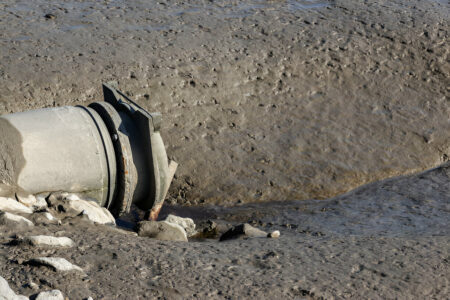Rainwater drains are essential for managing excess water during heavy rains. When these drains are blocked, it can lead to severe flooding and water damage. A common culprit for these blockages is mud, which can accumulate over time and obstruct the flow of water. In this article, we will explore how to effectively unblock a rainwater drain clogged with mud, ensuring your drainage system remains functional and efficient.
Understanding the Problem
Mud accumulation in rainwater drains can happen gradually. Heavy rains can wash soil and debris into the drains, where they settle and solidify, creating a blockage. Recognizing the signs of a blocked drain, such as slow drainage, standing water, and unusual sounds from the pipes, is crucial in addressing the issue promptly.
Tools and Materials Needed
Before tackling a blocked drain, gather the necessary tools and materials:
- Garden hose
- Plumber’s snake
- Pressure washer
- Bucket and gloves
- Safety goggles and mask
- Drain cleaner (chemical or eco-friendly)
Initial Assessment
Start by inspecting the drain to assess the severity of the blockage. Look for visible debris at the drain’s opening and check for any standing water. This initial assessment will help determine the best approach to unclogging the drain.
Simple Unclogging Methods
Using a Hose
A garden hose can be an effective tool for minor blockages. Insert the hose into the drain and turn on the water at high pressure. The force of the water can dislodge small amounts of mud and debris, clearing the blockage.
Manual Removal of Debris
If the blockage is near the surface, you can manually remove the debris. Use gloves and a bucket to scoop out mud and leaves from the drain opening. Be cautious to avoid pushing the debris further into the drain.
Using a Plumber’s Snake
A plumber’s snake is a flexible, auger-like tool designed to navigate through pipes and dislodge blockages. Here’s how to use it:
- Insert the snake into the drain until you feel resistance.
- Rotate the handle to break up the mud.
- Push and pull the snake to loosen the blockage.
- Remove the snake and flush the drain with water.
Using a plumber’s snake is beneficial for reaching deeper blockages that cannot be removed manually.
Chemical Solutions
Chemical drain cleaners can be used for stubborn blockages. Choose a cleaner that is safe for your drain material. Follow the instructions carefully, and wear protective gear to prevent skin and eye irritation.
Pressure Washing
Pressure washing is a powerful method to clear mud from drains. Attach a pressure washer to a water source and insert the nozzle into the drain. The high-pressure water can break up and flush out the mud, restoring proper water flow.
Preventative Measures
Preventing blockages is easier than dealing with them. Regular maintenance, such as cleaning the drain opening and installing drain guards, can significantly reduce the risk of mud accumulation. Additionally, periodic inspections and prompt removal of debris will keep your drains clear.
When to Call a Professional
If your attempts to unblock the drain are unsuccessful, it may be time to call a professional plumber. Indicators that you need expert help include persistent blockages, foul odors, and extensive flooding. Professionals have specialized tools and expertise to handle severe blockages safely and effectively.
Environmental Considerations
When choosing unclogging methods, consider their environmental impact. Eco-friendly solutions, like using baking soda and vinegar, can be effective without harming the environment. Ensure proper disposal of waste to avoid environmental contamination.
DIY vs. Professional Services
Deciding between DIY methods and professional services depends on the blockage’s severity and your comfort level with handling the tools. DIY methods are cost-effective for minor blockages, while professional services offer efficiency and thoroughness for more significant issues.
Common Mistakes to Avoid
Avoid these common mistakes to keep your drains clear:
- Neglecting regular maintenance
- Using inappropriate tools or chemicals
- Ignoring early signs of blockage
FAQs
What causes rainwater drains to block?
Rainwater drains can become blocked due to mud, leaves, and other debris washing into them during heavy rains. Over time, this debris can accumulate and solidify, obstructing the water flow.
Can I use household items to unclog my drain?
Yes, household items like a garden hose or a mixture of baking soda and vinegar can be effective for minor blockages. However, for severe clogs, specialized tools or professional services may be necessary.
How often should I clean my rainwater drains?
It’s recommended to inspect and clean your rainwater drains at least twice a year, particularly before and after the rainy season. Regular maintenance will help prevent blockages.
Are chemical drain cleaners safe for the environment?
Not all chemical drain cleaners are environmentally friendly. Opt for eco-friendly options or natural alternatives like baking soda and vinegar to minimize environmental impact.
What should I do if my drain remains blocked after trying these methods?
If your drain remains blocked despite your efforts, it’s best to call a professional plumber. Persistent blockages may indicate a more serious underlying issue that requires expert attention.
What will dissolve mud in a drain?
To dissolve mud in a drain, you can use a combination of water pressure and natural or chemical solutions. Here are some effective methods:
- Water Pressure: Using a garden hose or a pressure washer, you can blast water through the drain to break up and flush out the mud. The force of the water can help dislodge mud clumps and clear the blockage.
- Baking Soda and Vinegar: This natural solution can help to dissolve minor mud blockages. Pour a cup of baking soda into the drain, followed by a cup of vinegar. The chemical reaction will fizz and can help to break down the mud. After about 15-30 minutes, flush the drain with hot water.
- Commercial Drain Cleaners: Chemical drain cleaners are formulated to break down organic materials, including mud. Follow the instructions on the product carefully, as these chemicals can be harsh. Ensure you use a cleaner that is appropriate for your type of drain and is safe for the environment.
Conclusion!!
Maintaining clear rainwater drains is crucial for preventing water damage and ensuring proper drainage. By understanding the causes of blockages and using the right tools and methods, you can effectively manage and prevent drain clogs. Regular maintenance and prompt action will keep your drainage system in top condition.







